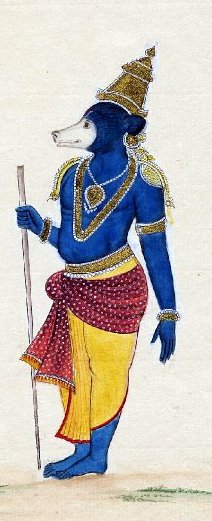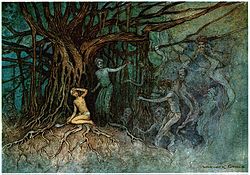This article has multiple issues. Please help improve it or discuss these issues on the talk page . (Learn how and when to remove these messages)
|
This is a list of legendary creatures from Indian folklore, including those from Vedic and Hindu mythology, sorted by their classification or affiliation.
Contents
- Creatures associated with animals
- Insects
- Matsya
- Frog
- Reptiles
- Pakshin
- Mushika
- Gaja or Hastin
- Kapi
- Varāha
- Hariṇa
- Gō
- Aja
- Ashva
- Khaḍgin
- Shvan
- Mahabidala
- Bidala
- Bhallūka
- Yuyukkhura
- Therianthropes
- Devas, Adaityas and Spirits
- Abhutarajas
- Adyas
- Angiris
- Apsara
- Asura
- Bhuta
- Dakini
- Gana
- Gandharva
- Guhyaka
- Kimpurusha
- Kindeva
- Kinnara
- Naga
- Panis
- Pishacha
- Preta
- Rakshasa
- Riksha
- Suparna 2
- Vanara 2
- Vetala
- Vidyadhara
- Vinayakas
- Yaksha
- Yakshini
- Yogini
- Others
- Human races
- Monsters
- See also
- References































